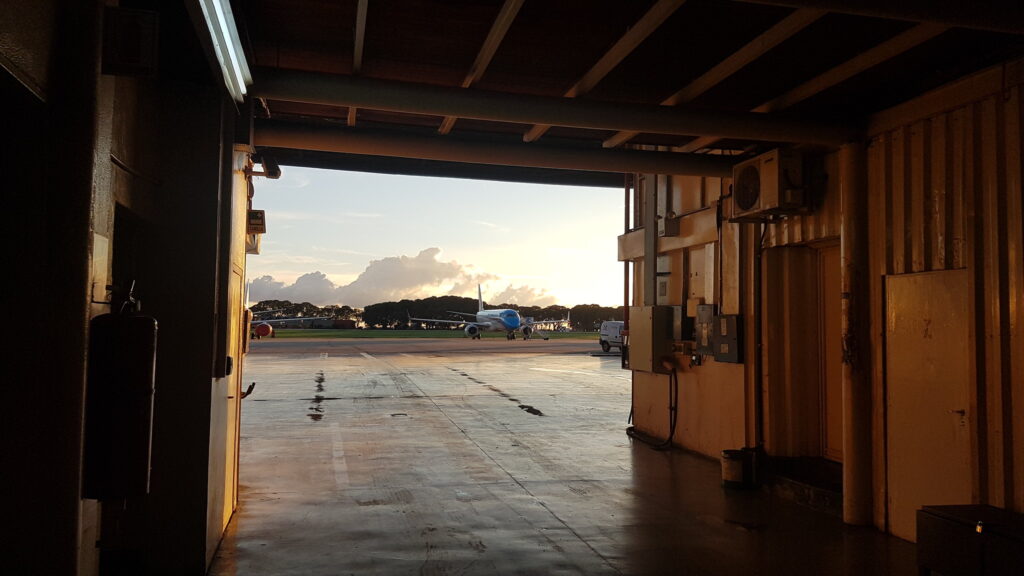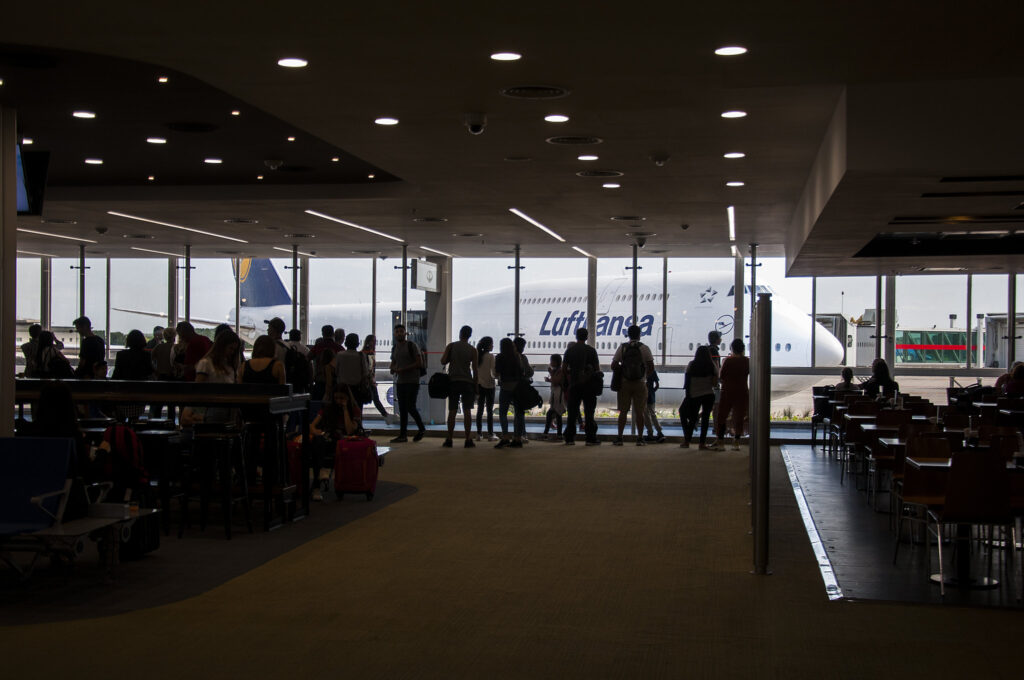Are you planning a trip to the vibrant city of Buenos Aires and wondering how to navigate its airports? Whether you’re a digital nomad seeking new adventures, a seasoned traveler exploring Argentina, or an expat setting up a new home, this guide on Buenos Aires airports will provide you with all the necessary information to make your journey smooth and hassle-free.
From tips on how to arrive and depart efficiently to insights on making the most of the airport facilities, ExpatPathways brings you a comprehensive guide to streamline your travel experience.
Discover the ins and outs of both Ezeiza and Jorge Newbery airports, and prepare yourself for an unforgettable entrance or departure from one of South America’s most bustling metropolises.
Importance of Airports in Buenos Aires
- Argentina has seen nearly 49 million travelers between 2014 and 2022.
- About 20 million of these were international visitors.
- Buenos Aires airports handle the majority of the country’s international air traffic.
- Most international visitors to Argentina come from Europe, Brazil, other Latin American countries, and the United States.
- Nearly half of all international visitors come to Buenos Aires for vacation or leisure purposes.
- Over 50% of international visitors in Buenos Aires choose to stay in hotels, though a significant number also stay in private homes or apartments.
- Ezeiza Airport is the main hub in Buenos Aires and Argentina, followed by Jorge Newbery Aeroparque, Córdoba Airport, and Mendoza Airport.
The Airports of Buenos Aires
Buenos Aires is home to two main airports within its metropolitan area:
- Ezeiza International Airport: Located in the Province of Buenos Aires, this airport handles the majority of the country’s international flights.
- Jorge Newbery Aeroparque: Situated in the city near Núñez neighborhood, this airport primarily serves domestic flights but has been increasing its international routes, especially within the region.
Both airports are managed by Aeropuertos Argentina 2000 and offer all necessary services, amenities, and facilities to aid travelers, both foreign and domestic, upon their arrival and departure.
Tips for Navigating Buenos Aires Airports
Patience is Key
In Argentina, bureaucratic processes can be slow. This might be different from what you are used to in countries in Europe or even other parts of Latin America where airport procedures like check-in and security are usually quick and efficient.
Arrive Early
For international flights, particularly those departing from Ezeiza International Airport, it’s advisable to plan your journey to the airport well in advance due to the considerable distance from most accommodations.
Check Your Bags
During check-in, your luggage will be weighed, and carrying an excessively heavy suitcase in the cabin is usually not allowed. It’s better to check your luggage even if it costs extra to avoid any inconvenience or delays.
Navigate Calmly
Once at Ezeiza Airport, cover the distance from the city with a pre-arranged taxi or shuttle service. Plan your route from the airport to your final destination carefully and ensure you have all your belongings.
Keep Your Belongings Safe
Despite strict security controls, non-violent thefts (like pickpocketing) can occur at Buenos Aires airports. Always keep your belongings close and within sight.
Finalize Any Last-minute Arrangements
Use airport facilities to exchange currency, even if the rates are not the most favorable, and check on other services like traveler assistance, SIM cards, and internet access. Airports in Buenos Aires have all the essential services a traveler might need.

Ezeiza International Airport
Information and Facts
Ezeiza International Airport, officially known as Ministro Pistarini International Airport (FAA: EZE – IATA: EZE – OACI: SAEZ), is located in the Ezeiza municipality, 35 km from downtown Buenos Aires. Classified as a 4F airport by the ICAO, it is the primary gateway for long-haul international flights into Argentina, whereas domestic and regional connections largely operate out of Jorge Newbery Aeroparque.
Inaugurated in 1949, it was once the largest airbase in the world for three years and currently serves as the international base for Aerolíneas Argentinas and hosts a naval air station of the Argentine Navy. The airport handles 85% of the country’s international traffic.
Internal map of the Ezeiza International Airport
2023 Statistics:
- Total passengers: 10,297,000
- International passengers: 7,107,000
- Domestic passengers: 3,190,000
Access
The address for Ministro Pistarini International Airport is: Autopista Riccheri km 33 500 Ezeiza B1802EZE. The main access routes include:
- Car: Via the General Pablo Riccheri Highway, with connections to Ezeiza-Cañuelas Highway, RP 4 “Camino de Cintura”, Avenida General Paz, and Avenida Teniente General Luis J. Dellepiane.
- Bus: Line 8 offers direct routes from Plaza de Mayo and a common route starting from the Faculty of Engineering.
- Train: Accessible via the Ezeiza branch of the General Roca Line, connecting through buses 394 or 518.
- Remises: Various companies offer direct transfers to and from the airport.
- Taxi: Available throughout Buenos Aires, with fares including tolls.
- Ride-sharing Apps: Services like Cabify and Uber operate to and from the airport.

Terminals and Infrastructure
- Terminal A: Opened in 2000, handles most international flights except those from SkyTeam companies, featuring amenities such as restaurants, bars, a pharmacy, and more.
- Terminal B: Currently under renovation; once completed, will significantly increase the airport’s capacity.
- Terminal C: Known as “Mercedes Sosa”, opened in 2011, mainly serves domestic flights and international departures for SkyTeam members.
- New “Zeppelin” Terminal: Under construction, aimed at consolidating all operations into a modern structure with enhanced capacities.
International and Domestic Connections
Flights from Ezeiza connect to numerous destinations across continents including:
- Africa: Ethiopia
- North America: Canada, USA, Mexico
- Central America: Costa Rica, Panama, Dominican Republic
- South America: Bolivia, Brazil, Chile, Colombia, Ecuador, Peru
- Asia: United Arab Emirates
- Europe: Germany, Spain, France, Italy, Netherlands, UK, Switzerland, Turkey
Airlines Operating at Ezeiza Airport
A diverse range of airlines operate at Ezeiza, including Aerolíneas Argentinas, LATAM Chile, Aeroméxico, Air Canada, Air France, ITA Airways, American Airlines, Avianca, British Airways, Delta Airlines, Emirates, and many more.
Services Offered at Ezeiza Airport
The airport provides a variety of services such as cafes, bars, postal services, pharmacies, duty-free shopping, tech stores, currency exchange, and traveler insurance.
Agencies Operating at Ezeiza Airport
Key agencies include the National Civil Aviation Administration (ANAC), Customs, National Agency for Controlled Materials (ANMAC), National Directorate of Migrations, Argentine Air Force, Ministry of Tourism, and others.
Getting to Ezeiza Airport
Optimal transport options to the airport include ride-sharing apps, rental cars, remises, taxis, and public transport, each providing various levels of convenience and cost-effectiveness.
Transport Available from Ezeiza Airport
The airport offers numerous transport options including remises, combis, taxis, buses, and car rentals. It is advised to avoid unlicensed solicitors at the airport and to use official service terminals and counters.
Jorge Newbery Airport (Aeroparque)
Useful Information and Data
Jorge Newbery Airport (ANAC: AER – IATA: AEP – OACI: SABE), commonly known as Aeroparque, is the main hub for domestic and some international flights within the Buenos Aires Metropolitan Area (AMBA), Argentina.
Situated along Costanera Rafael Obligado Avenue near the Rio de la Plata in the Palermo neighborhood, it is the only airport within the limits of the Autonomous City of Buenos Aires.
The airport is categorized as 4E by the ICAO and is owned by the city government of Buenos Aires, managed under concession by Aeropuertos Argentina 2000.
It includes a military sector and previously housed an Aeronautical Museum, now relocated to Morón Airport. Aeroparque handles over 350 daily flights to cities across Argentina, Brazil, Chile, Paraguay, and Uruguay, and also serves private flights, air taxis, and charters.
Internal map of Jorge Newbery Airport
2023 Statistics:
- Total Passengers: 15,566,000
Access Routes
The main access to the airport is via Rafael Obligado Avenue (also known colloquially as Costanera Norte or simply Costanera). From Greater Buenos Aires, access is via General Paz Avenue, Lugones Avenue, and then Costanera Avenue.
From downtown and the southern parts of Buenos Aires City, access routes include 9 de Julio Avenue, Illia Highway (toll road), and Costanera Avenue. An alternative toll-free route is from 9 de Julio Avenue or Paseo Colón Avenue up to Retiro and then along Costanera Avenue.
Transportation to and from the Airport
- Buses: Lines 8, 33, 34, 37, 45, 160, 166
- Remis: Various companies offer transfers to and from the aeroparque.
- Taxi: Available from any point within the city. The journey from Ministro Pistarini International Airport takes about 40 minutes and includes toll roads.
- Car Rental: Various companies provide this service.
Infrastructure
The airport is located 2 km from downtown Buenos Aires, in the Palermo neighborhood, covering an area of 138 hectares. It has one runway oriented 13/31 measuring 2700 × 60 m.
- Commercial Platform: Features a passenger terminal of 30,000 sq m with ten aircraft access jetways and remote parking positions where buses shuttle passengers to and from the terminal.
- Industrial Platform: Includes the South Terminal for private and air taxi flights, as well as maintenance hangars for airlines like Aerolíneas Argentinas, Austral Líneas Aéreas, LATAM (Argentina), and Avianca Argentina.
- Military Platform: Located southeast of the airport, it houses the Argentine Air Force’s facilities, including the presidential aircraft and other military and foreign air force planes.
- Cargo Platform: A small area at the north end of the airport with a large cargo terminal, mainly used by small aircraft for cargo and mail flights.
Services at Jorge Newbery Airport
The airport offers a range of services including banks, cafés, newsstands, duty-free shops, pharmacies, kiosks, bookstores, and restaurants.
Agencies at Jorge Newbery Airport
Agencies operating at the airport include the National Civil Aviation Administration (ANAC), the National Agency for Controlled Materials (ANMAC), the National Directorate of Migrations, the General Directorate of Customs, the Argentine Air Force, Interpol, the National Airports System Regulatory Body (ORSNA), the Ministry of Tourism and Sports, the Airport Security Police, the National Registry of Persons (RENAPER), SENASA, and Border Health.
Airlines Operating at Jorge Newbery Airport
Airlines such as Aerolíneas Argentinas, Gol, LATAM Chile, American Jet, Sky Airlines, FlyBondi, Avianca, Paranair, and JetSMART offer both domestic and international flights.
National and International Connections
Destinations include major cities across Argentina and international connections to Uruguay (Montevideo, Punta del Este), Peru (Lima), Paraguay (Asunción), Chile (Santiago), Colombia (Bogotá), and Brazil (multiple cities including Brasilia and Sao Paulo).
How to Get to Jorge Newbery Airport
Located in the Núñez/Palermo neighborhood within Buenos Aires City, Aeroparque offers convenient access through remises, taxis, public transportation, and ride-sharing apps like Cabify, Uber, DiDi, and inDrive, making transfers quick and straightforward.
Last Considerations
As you prepare to depart from or arrive in Buenos Aires, remember that the key to a worry-free airport experience is preparation and vigilance.
Make sure to arrive at the airport with enough time to comfortably orient yourself, complete check-in procedures, and relax before your flight.
When planning your departure from Buenos Aires, choose your transportation method wisely, as options vary widely in terms of price, comfort, and speed.
Always keep a close watch on your belongings to ensure their safety, and utilize the extensive services available at Buenos Aires airports for any last-minute needs like currency exchange, travel insurance, or car rental.
ExpatPathways is your go-to source for comprehensive guidance and practical advice on navigating Buenos Aires airports, helping every traveler, digital nomad, and expat make the most of their journey.
(Featured Image Source: Juan Pablo Mascanfroni/unsplash.com)


